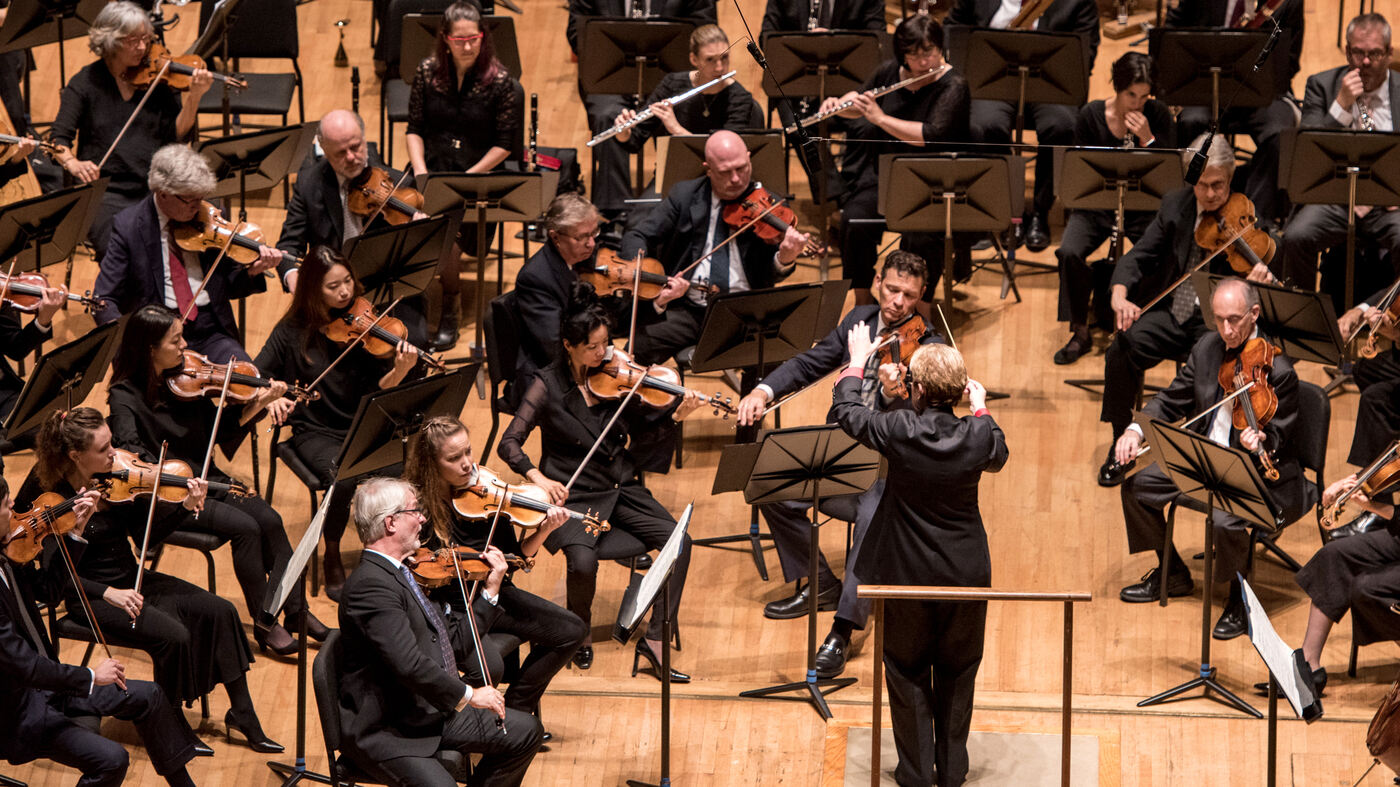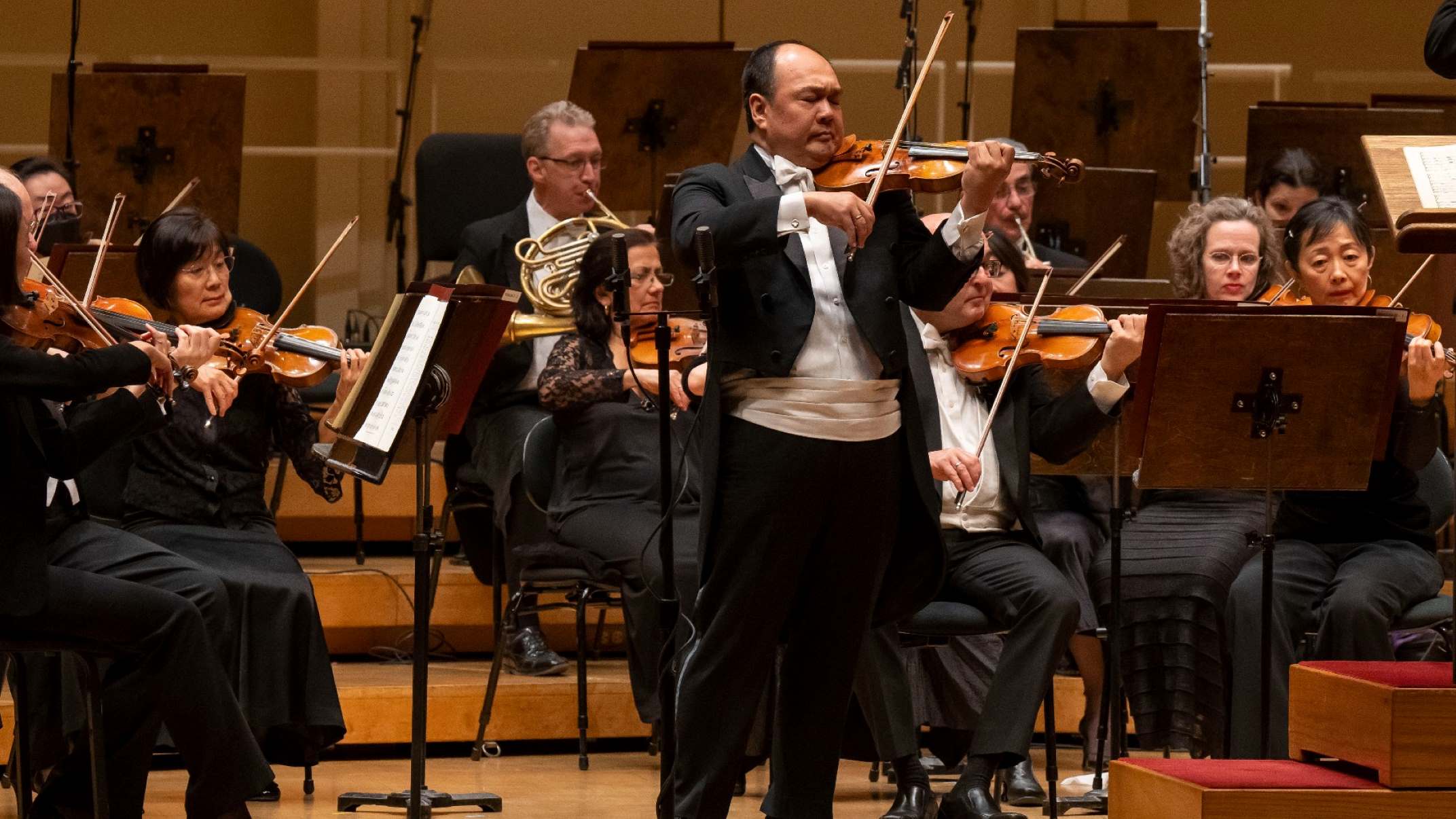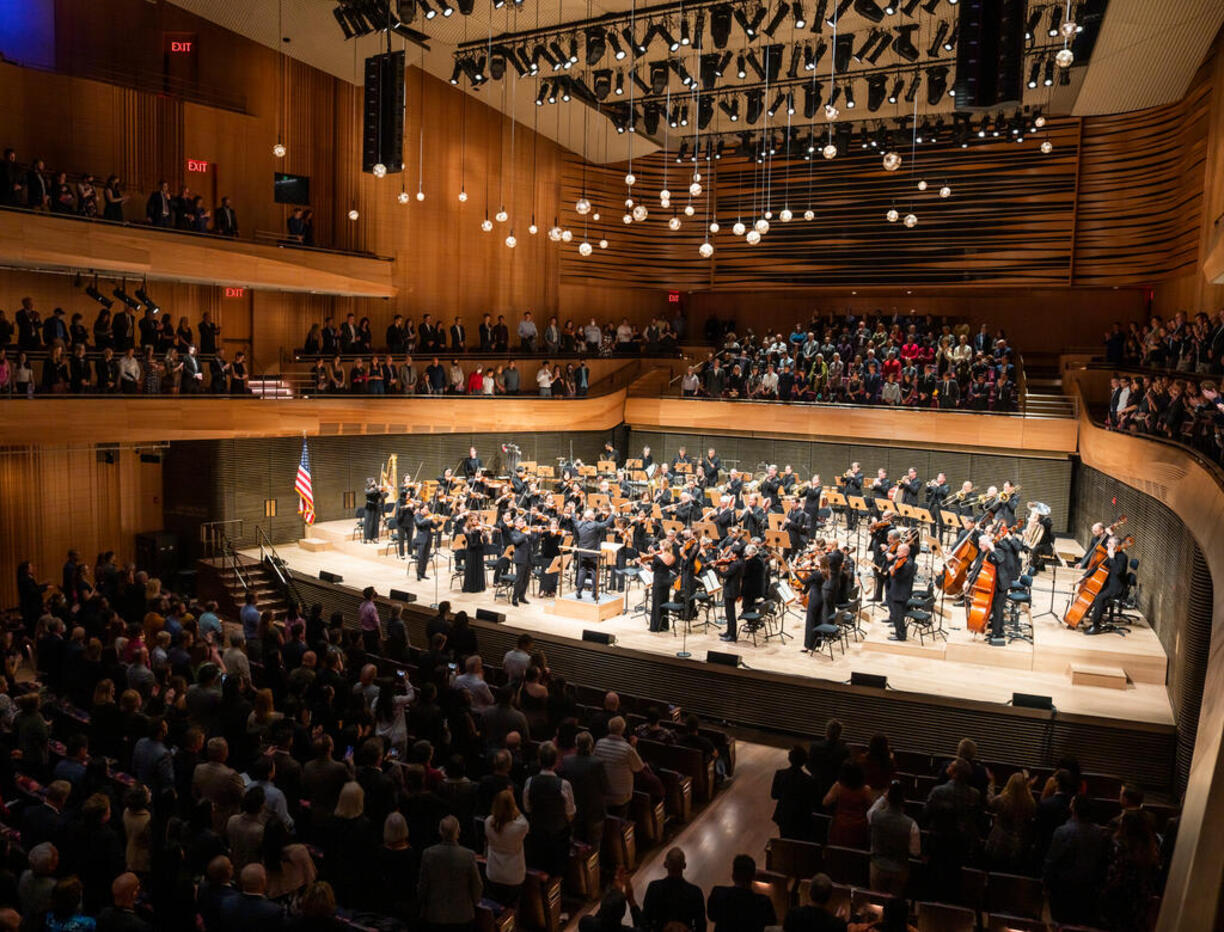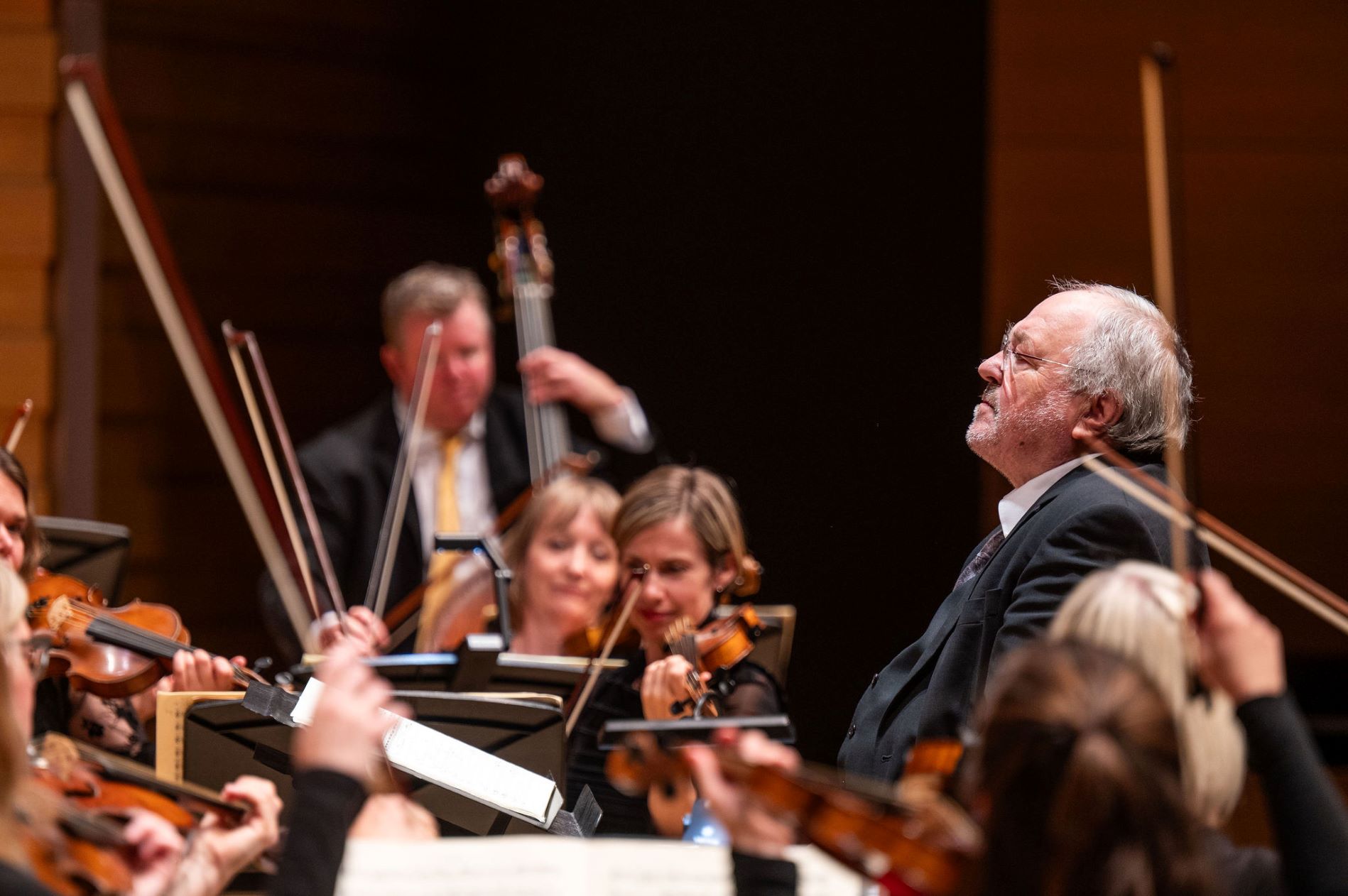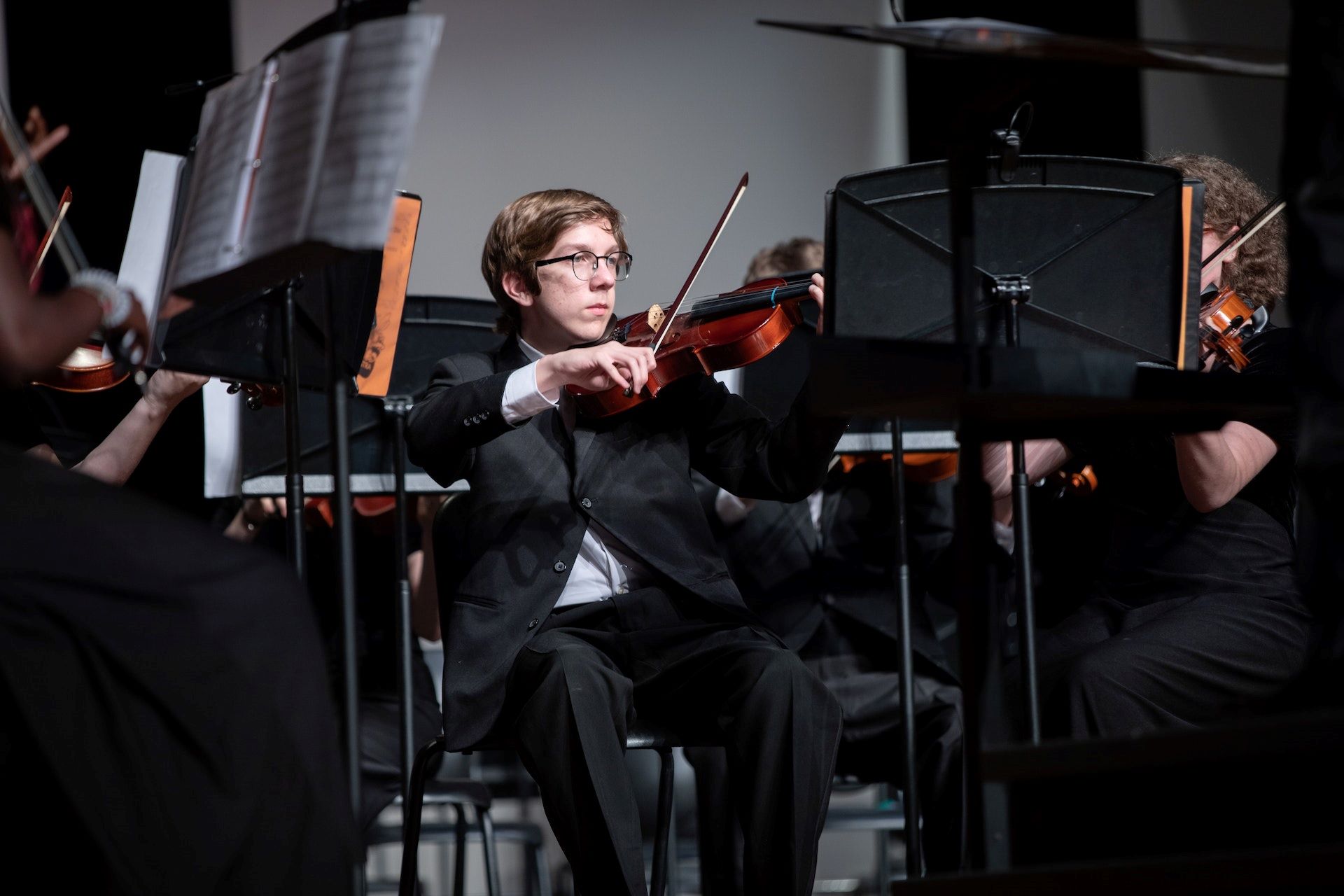

Symphony
What Symphony Is Ode To Joy
Modified: February 24, 2024
Discover the mesmerizing Symphony behind Beethoven's iconic Ode To Joy. Immerse yourself in this musical masterpiece and experience pure joy.
(Many of the links in this article redirect to a specific reviewed product. Your purchase of these products through affiliate links helps to generate commission for AudioLover.com, at no extra cost. Learn more)
Table of Contents
Introduction
When it comes to iconic musical compositions, few hold as much universal recognition and emotional power as Ludwig van Beethoven’s “Ode to Joy.” This captivating melody, which features prominently in Beethoven’s Symphony No. 9, has transcended time and culture, resonating with listeners from all walks of life.
Originally composed by Beethoven in the early 19th century, “Ode to Joy” has become a symbol of unity, hope, and the celebration of the human spirit. Its enduring popularity can be attributed to both its musical brilliance and the profound themes it explores. As we delve into the story behind this extraordinary piece of music, we will gain a deeper understanding of its significance and impact.
Throughout this article, we will explore the background of “Ode to Joy,” the life of its composer Ludwig van Beethoven, and the symphony in which it is featured. We will also delve into the meaning and interpretation of the piece, providing a musical analysis to unravel its structural and emotional components. Finally, we will examine the reception and lasting legacy of “Ode to Joy,” assessing its influence on the world of music and beyond.
Prepare to embark on a musical journey that will transport you through time and connect you to the indomitable spirit of joy that Beethoven so beautifully captured in his masterpiece, “Ode to Joy.”
Background of Ode to Joy
The origins of “Ode to Joy” can be traced back to Friedrich Schiller’s poem, “An die Freude” (To Joy), written in 1785. Schiller’s powerful and uplifting words struck a chord with Ludwig van Beethoven, who was deeply moved by the poem’s message of universal brotherhood and the pursuit of happiness.
Beethoven first considered setting “An die Freude” to music in 1793 but it wasn’t until over two decades later, in 1822, that he finally embarked on the project. The composition underwent numerous revisions and Beethoven masterfully integrated the poem into the final movement of his Symphony No. 9.
What makes “Ode to Joy” particularly fascinating is the way Beethoven’s musical interpretation transforms Schiller’s poem into a transcendent experience. Beethoven’s genius lies in his ability to elevate the words of the poem into a universal expression of joy that resonates deeply with listeners.
It is important to note that Beethoven’s decision to include a choral element in the symphony was groundbreaking for the time. The inclusion of voices alongside the instrumental sections was a departure from the traditional symphonic format. With the addition of singers, Beethoven imbued the music with an added layer of grandeur and emotional impact.
Furthermore, the composition of “Ode to Joy” coincided with a significant period in Beethoven’s life. By the time he began working on Symphony No. 9, he had already become deaf, which added an extra layer of challenge and emotional depth to the composition. Despite his profound hearing loss, Beethoven was able to channel his innermost emotions into his music and create a piece that would resonate with audiences for centuries to come.
As we explore the background of “Ode to Joy,” it becomes clear that the creation of this iconic melody was a labor of love for Beethoven. It was a manifestation of his desire to communicate profound ideas and emotions through music, and we are fortunate to have inherited this extraordinary piece as a result.
The Composer: Ludwig van Beethoven
Ludwig van Beethoven, born in Bonn, Germany, in 1770, is widely regarded as one of the greatest composers in Western classical music history. His works, characterized by their emotional intensity, dramatic power, and musical innovation, continue to captivate audiences around the world.
Beethoven’s life was marked by both personal struggles and artistic triumphs. At a young age, he showed exceptional musical talent and was recognized as a prodigy. However, his childhood was overshadowed by his father’s harsh discipline and the burden of supporting his family financially.
Beethoven’s progressive hearing loss, which began in his late twenties and eventually left him completely deaf, posed tremendous challenges to his career and personal life. Despite this adversity, he persevered and continued to create groundbreaking compositions that pushed the boundaries of classical music.
Throughout his career, Beethoven revolutionized many aspects of musical composition. He bridged the gap between the classical and romantic periods, paving the way for future composers by expanding the possibilities of harmonic structure, musical form, and emotional expression.
Beethoven’s compositions were characterized by their profound emotional depth, boldness, and innovation. He was a master of musical development and often explored contrasting themes and motifs, creating tension and drama that captured the attention of listeners.
It is this combination of technical brilliance, emotional intensity, and fearless experimentation that makes Beethoven’s works, including “Ode to Joy,” so compelling and enduring. His ability to communicate complex emotions and universal themes through his music is unmatched.
As Beethoven’s legacy continues to resonate through the ages, his impact on the world of music cannot be overstated. His compositions, including Symphony No. 9 and “Ode to Joy,” have transcended time and continue to inspire and move audiences, reminding us of the power of human creativity and the indomitable spirit of the human soul.
The Symphony Containing Ode to Joy
Beethoven’s Symphony No. 9, also known as the “Choral Symphony,” is the monumental masterpiece that contains the iconic “Ode to Joy.” Composed between 1822 and 1824, it stands as a testament to Beethoven’s creative genius and his ability to push the boundaries of symphonic music.
Symphony No. 9 consists of four movements, with the finale being the most well-known and celebrated. It is in this final movement that Beethoven brings together a full orchestra, choir, and soloists to present “Ode to Joy” in all its grandeur and splendor.
The symphony begins with a powerful and dramatic opening, establishing a weighty and intense atmosphere. This sets the stage for the journey that the music will take the listener on, leading to the triumphant finale that encompasses the spirit of joy expressed in “Ode to Joy.”
Beethoven’s use of orchestration in Symphony No. 9 is particularly noteworthy. He incorporates a wide range of instruments, including the full force of brass and percussion, to create a rich and dynamic sound that complements the themes of the composition.
However, it is the inclusion of voices in the final movement that elevates Symphony No. 9 to unparalleled heights. As the orchestra builds up to the climax, the choir and soloists join in with the immortal lines of “Ode to Joy,” turning the symphony into a transcendent vocal and instrumental masterpiece.
The combination of the symphony’s powerful orchestration, the poetic beauty of Schiller’s words, and the sheer emotional impact of the choral elements all contribute to the significance of Symphony No. 9 in the realm of classical music.
Symphony No. 9 was met with both awe and controversy upon its premiere. Its boldness and departure from traditional symphonic conventions challenged the expectations of the time. However, its impact was undeniable, and it has since become recognized as one of the greatest symphonies ever composed.
The inclusion of “Ode to Joy” in Symphony No. 9 represents a pinnacle moment in Beethoven’s career. It exemplifies his ability to create music of immense beauty and power that resonates with audiences on a deeply emotional level.
As we explore Symphony No. 9, we delve further into the transformative experience that Beethoven sought to create, leading us to the climactic expression of joy in “Ode to Joy.”
Meaning and Interpretation of Ode to Joy
“Ode to Joy” is much more than a simple melody; it carries profound meaning and touches upon universal themes that have resonated with audiences for centuries. The lyrics, coupled with Beethoven’s composition, invite us to contemplate the human experience, the pursuit of happiness, and the power of unity.
The poem by Friedrich Schiller, upon which “Ode to Joy” is based, speaks of the joy shared by all humanity, transcending the divisions of class, race, and nationality. It expresses a longing for a world where all people are united in love, understanding, and harmony.
Beethoven’s music amplifies the poem’s message through its emotional and dynamic range, from the jubilant and triumphant to the transcendentally sublime. The sweeping melodies, soaring choral sections, and dramatic shifts in tempo and dynamics encapsulate the essence of joy, inspiring a range of emotions in the listener.
Interpreting “Ode to Joy” can be a deeply personal experience, as individuals connect with the music and lyrics in their own unique way. It can evoke a sense of hope, optimism, and the power of the human spirit, or serve as a reminder of the innate longing for unity and peace that resides within all of us.
At its core, “Ode to Joy” invites us to reflect on the possibility of a more harmonious world and the potential for joy and love to transcend the challenges and divisions that exist. It serves as a powerful reminder of our shared humanity and the potential for greatness that lies within each individual.
Moreover, the cultural and historical context in which “Ode to Joy” was composed adds another layer of interpretation. Beethoven wrote this symphony during a time of political upheaval in Europe, with revolutionary ideals and societal change in the air. In this context, “Ode to Joy” can be seen as a call for unity and brotherhood, a rallying cry for the human spirit in the face of adversity.
Ultimately, the meaning and interpretation of “Ode to Joy” depend on the individual experiencing it. It can evoke a wide range of emotions and serve as a source of inspiration, comfort, and catharsis. It reminds us of the power of music to touch our souls and to uplift us, bridging the gap between language and pure emotion.
As we listen to and engage with “Ode to Joy,” we become part of a timeless conversation—an exploration of joy, universal brotherhood, and the resilience of the human spirit, encapsulated in the harmonies and melodies that Beethoven crafted with such brilliance and artistry.
Musical Analysis of Ode to Joy
“Ode to Joy” is not only a piece that carries profound meaning, but it is also a masterful composition from a musical standpoint. Beethoven’s genius is on full display in the symphony’s musical structure, thematic development, and expressive techniques.
The main theme of “Ode to Joy” is instantly recognizable and memorable. It is introduced in the cellos and basses, and gradually builds in intensity as it is passed on to other sections of the orchestra. This theme is characterized by its rhythmic drive and uplifting melodic contour, creating a sense of joy and anticipation.
Beethoven employs a variety of techniques to develop and expand upon this main theme. He explores different harmonies, orchestrations, and variations, each time adding layers of complexity and depth to the music. This creates a sense of progression and growth throughout the symphony.
One notable feature of “Ode to Joy” is Beethoven’s use of dynamics and contrasts. He seamlessly transitions from soft, delicate passages to powerful, climactic moments, heightening the emotional impact of the music. The interplay between loud and soft dynamics adds drama and tension, keeping the listener engaged and captivated.
Another aspect that sets “Ode to Joy” apart is Beethoven’s masterful handling of the choral sections. The soloists and choir lend a human voice to the composition, adding a layer of transcendence and emotive power. The interplay between the vocal and instrumental sections creates a sense of dialogue and unity, further reinforcing the overarching message of universal brotherhood.
Additionally, Beethoven’s use of rhythm and tempo changes contributes to the dramatic effect of “Ode to Joy.” He employs sudden shifts in tempo, accelerating the pace to create a sense of urgency and excitement. These rhythmic changes add a lively and dynamic element to the composition, enhancing its power and capturing the essence of joy.
Structurally, “Ode to Joy” follows the traditional four-movement symphony format, with the main theme appearing prominently in the final movement. However, Beethoven’s treatment of the theme is unconventional, as he weaves it throughout the entire symphony, creating a sense of unity and continuity.
In analyzing “Ode to Joy” musically, it becomes apparent that Beethoven’s genius lies not only in his ability to compose beautiful melodies but also in his skillful manipulation of musical elements to evoke specific emotions and convey his message. It is this combination of technical brilliance and emotional depth that has solidified “Ode to Joy” as a timeless masterpiece.
Reception and Legacy of Ode to Joy
Upon its premiere, Beethoven’s Symphony No. 9 and its crowning achievement, “Ode to Joy,” received mixed reactions. Some were in awe of the symphony’s beauty and power, while others found it unconventional and even perplexing. However, as time went on, the true impact and significance of “Ode to Joy” became undeniable.
Despite the initial mixed reviews, Symphony No. 9 quickly gained recognition as a monumental work of art. It marked a turning point in the history of symphonic music, breaking new ground in terms of composition, structure, and emotional depth. “Ode to Joy” became representative of the symphony as a whole, and its popularity grew steadily.
As years passed, “Ode to Joy” cemented its place as one of the most celebrated musical compositions in history. Its enduring appeal can be attributed to the universal themes it addresses, such as joy, unity, and the power of the human spirit. The timeless message of the music continues to resonate with listeners across generations and cultures.
Beethoven’s Symphony No. 9 and “Ode to Joy” have had a profound influence on the world of music. They have inspired countless composers and performers, shaping the development of symphonic music and leaving an indelible mark on the classical music tradition.
“Ode to Joy” has also transcended the realm of classical music and permeated popular culture. It has been adapted and arranged in various styles and genres, from rock and pop to jazz and even electronic music. Its infectious melody has been used in films, commercials, and sporting events, further solidifying its place in the public consciousness.
Beyond its musical impact, “Ode to Joy” and Symphony No. 9 hold a symbolic significance. The symphony’s message of joy, unity, and the pursuit of universal brotherhood has made it an anthem of hope and inspiration. It has been performed in moments of celebration and triumph, as well as during times of political and social significance.
Beethoven’s “Ode to Joy” continues to be embraced by audiences worldwide, serving as a testament to the power of music to transcend boundaries and touch the depths of our souls. Its legacy as an artistic masterpiece and a celebration of the human spirit will undoubtedly endure for generations to come.
Conclusion
In conclusion, Ludwig van Beethoven’s “Ode to Joy” from Symphony No. 9 stands as a testament to the power of music to convey profound emotions and universal themes. Through its timeless melody and masterful composition, it has become an enduring symbol of joy, unity, and the resilience of the human spirit.
From its origins in Friedrich Schiller’s poem to Beethoven’s progressive hearing loss, the story behind “Ode to Joy” adds layers of depth to its significance. Beethoven’s genius and innovation shine through the symphony’s musical structure, powerful dynamics, and integration of orchestral and choral elements.
The meaning and interpretation of “Ode to Joy” are deeply personal, connecting with individuals in their unique ways. It invites us to contemplate the pursuit of happiness, the longing for unity, and the potential for a harmonious world. Through its profound themes and emotional impact, it has left an indelible mark on the world of music and popular culture.
Beethoven’s Symphony No. 9 and “Ode to Joy” continue to captivate audiences and inspire musicians across generations. Its enduring legacy is a testament to Beethoven’s unparalleled mastery and his ability to create music that transcends time and speaks to the human spirit in profound and meaningful ways.
As we listen to the soaring melodies and explore the depths of joy conveyed in “Ode to Joy,” we are reminded of the power of music to move us, uplift us, and transcend the boundaries that separate us. It serves as a poignant reminder of our shared humanity and the potential for greatness that lies within each of us.
In a world often marked by division and strife, “Ode to Joy” remains a beacon of hope. It reminds us that, despite our differences, we can find common ground through the language of music and the pursuit of joy. Let the timeless beauty and profound message of “Ode to Joy” continue to inspire and unite us as we navigate the journey of life together.


